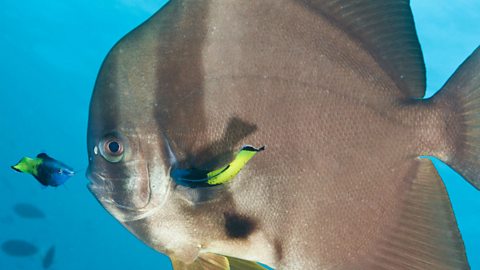Mutualism
In a mutualistic relationship, both species benefit from the interaction in an interdependent relationship.
For example, many herbivores are home to cellulose-digesting protozoa/bacteria that live in their guts.
The herbivore provides the protozoa/bacteria with a warm, moist environment with a constant supply of food.
The protozoa/bacteria break down cellulose. This enables the herbivore to access the nutrients in their cellulose-rich diet, The protozoa/bacteria also provide a protein source.
Other examples of mutualism include:
- 'Cleaner' fish feed off the dead skin and parasites of larger fish such as sharks. This provides the cleaner fish with food and protection and keeps the larger fish clean and less prone to infections.
- Lichens are formed by algae and fungi living together. Algae can photosynthesise and make food, which is shared by the fungus. The fungus in turn shelters the algae from a harsh climate.
- Leguminous plants (such as peas, beans and colover) have colonies of nitrogen-fixing bacteria in nodules attached to their roots. The plants gain nitrates from the bacteria, and the bacteria gain sugars from the plants. This is another example of mutualism.

Image caption, Cleaner fish
Large fish are kept clean by cleaner fish, which feed off dead skin and parasites
Image caption, Lichens in the Antarctic
The symbiotic relationship between algae and fungi in lichens allows them to live in extreme conditions, including the Antarctic
Image caption, Plants with nitrogen-fixing bacteria
The roots of the peanut plant have nodules which house nitrogen-fixing bacteria
1 of 3